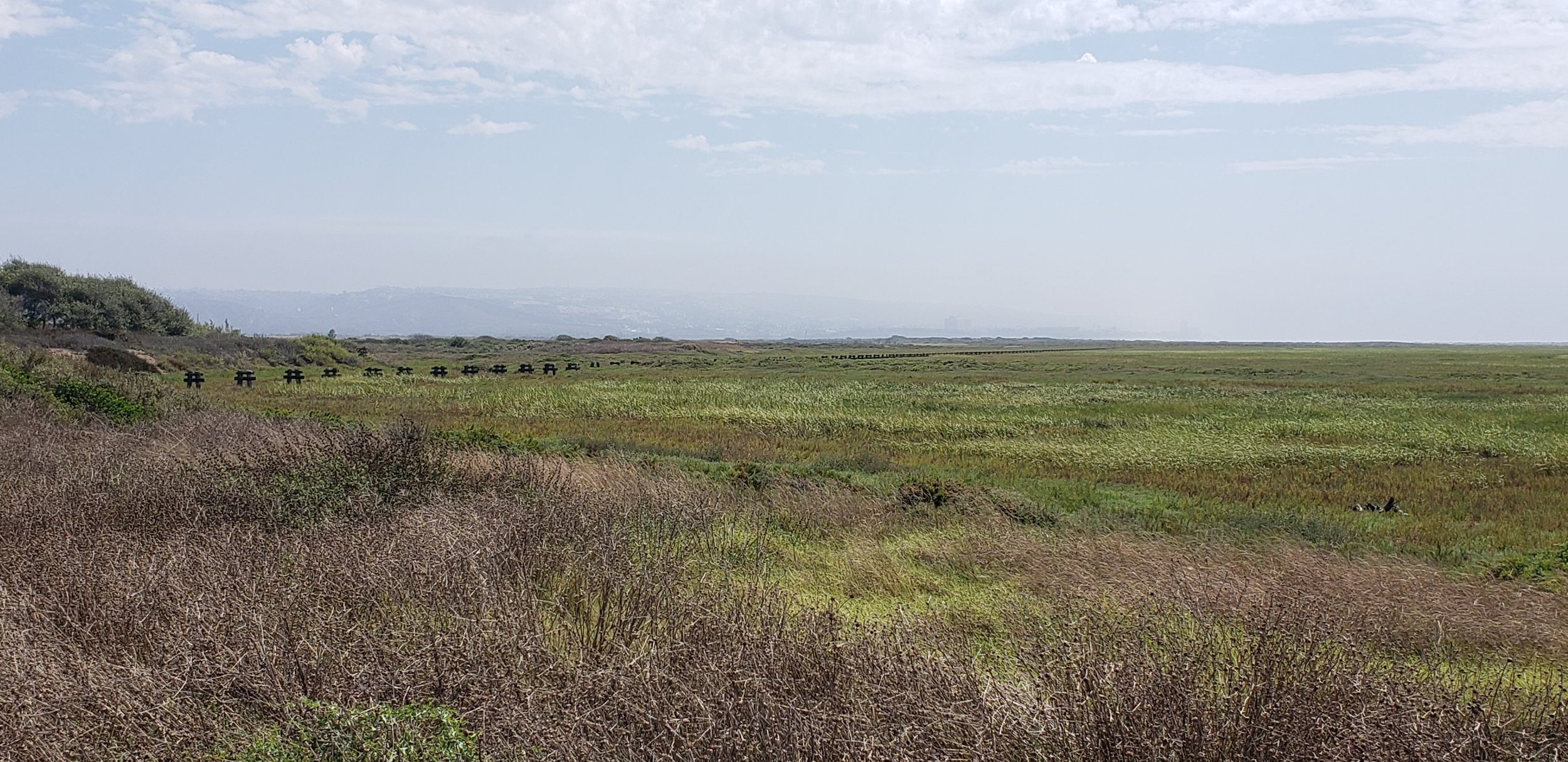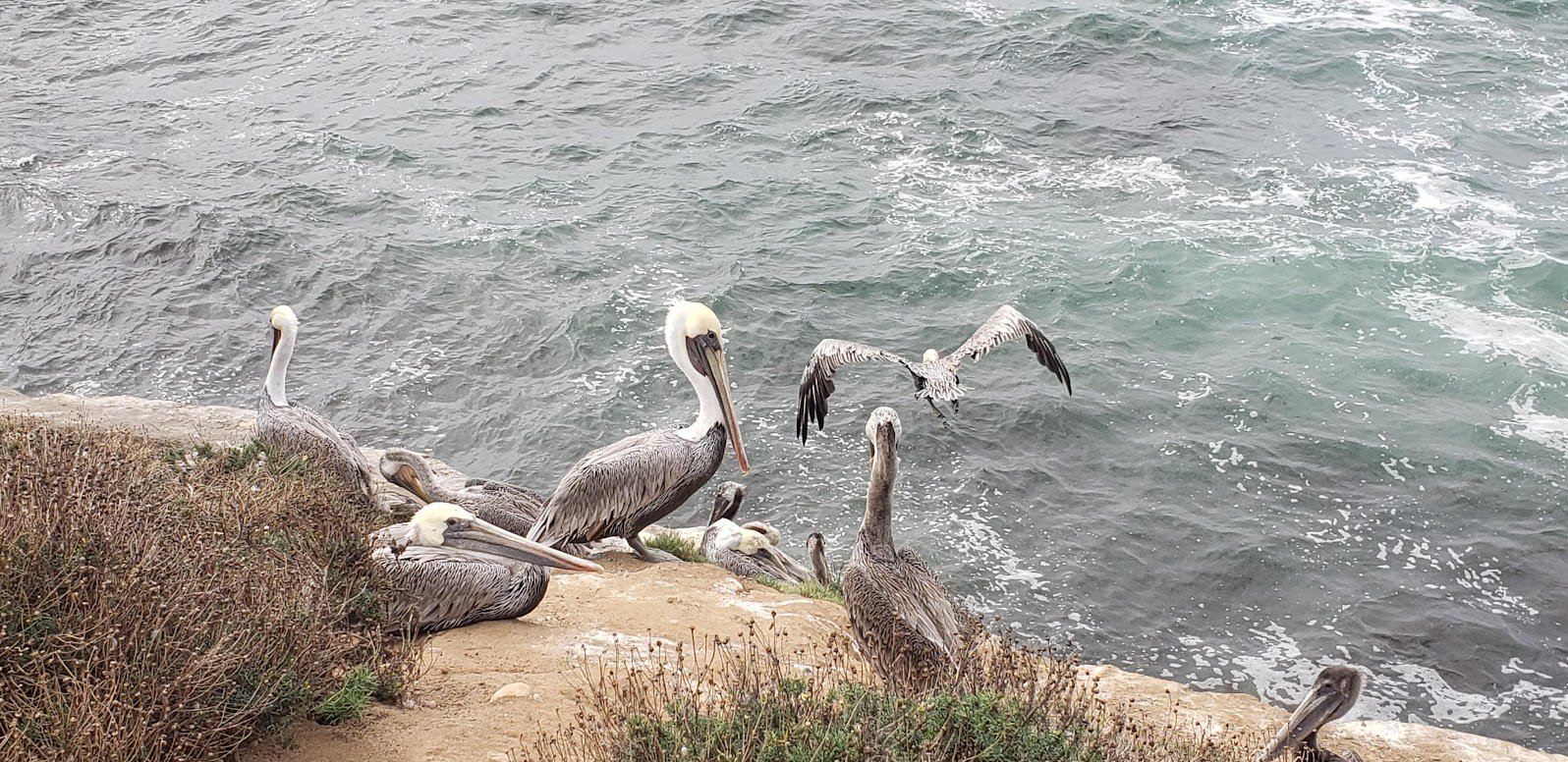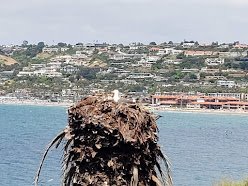Border Diaries, part 1: San Diego
Spider web in foreground, Tijuana River Estuary and Tijuana, Mexico in background
Wednesday, Aug. 30
On approach to the San Diego Airport in a Southwest 737, I got a sense of how difficult it is to land a plane here. The plane dipped 15 degrees to the left side and corrected just before it hit the runway, hard, and bounced, hard. It rose up and hit the runway again with a thud, but rolled on the tarmac uneventfully from that point on. This was not a touchdown in the normal sense of the word. I couldn’t imagine the plane landing any harder without the landing gear coming off. But at least the plane was on the runway—the airport’s only runway—intact.
“If you weren’t awake before landing, you are now,” the flight attendant said. “Welcome to San Diego.”
After grabbing my bags, I took the free shuttle to Old Town and then caught the 30 Bus at the Transit Center.
From Left to Right clockwise: Imperial Beach, closed due to sewage contamination; Tijuana River Estuary with Tijuana, Mexico on horizon-line, public art in Barrio Logan depicting Cesar Chavez and children, Frida Kahlo mural in Barrio Logan, Pelicans at the beach in La Jolla, seagull at the Cove in La Jolla, murals under construction, Barrio Logan
I’ll be spending the next month at my parents’ house in La Jolla. I’ll help my dad take care of my mom, whose 82nd birthday is approaching. My mom has severe arthritis and other medical issues that make it necessary for her to have round-the clock care. My dad, who is 85, can’t do it on his own, and he has employed caregivers to assist her but this isn’t enough. In between making meals, helping my mom get around, and other tasks, I’ll be planning a trip along the Mexican border, from the Pacific Ocean to the Gulf of Mexico. I hope to volunteer with border rights organizations. I hope to find out as much as I can about the situation on the worsening migrant crisis. I hope to learn as much as I can about what is, in my view, the world’s biggest news story, and I also want to, in my own small way, help out. La Jolla, one of the wealthiest neighborhoods in San Diego, might seem like an unlikely jump-off point for such a trip, but this is where life has led me.
Friday, September 8
Naturally, I need to get away from the house from time to time. Most days here, it’s enough to just run along Windansea Beach, which happens to be a huge surfing beach, or walk north to the Cove to visit the sea lions and the pelicans. The beauty of the rocks and the beach, against the wide swath of the Pacific, is just stunning here, particularly at sunset. But sometimes I opt for longer excursions, using the city’s impressive public transportation system.
Today is such a day: I decided to explore areas of the city south of downtown. So I took the 30 bus from La Jolla to the Old Transit Center. From there I took the Blue Line Trolley to Imperial Beach, which is the southernmost public beach in California. It’s also one of the most polluted. The San Diego Board of Supervisors has declared a state of emergency here due to pollution from raw sewage along the shore.
I arrived around noon. I got off the bus near Veterans Park, where I found a mural that portrayed a soldier in silhouette. The soldier appeared to be either saluting or putting a gun to his own head. I assume, though, the artist’s intent was the former not the latter. (The grand prize for unintentionally-bad San Diego art, at least in terms of art placement, goes to a portrait of Cesar Chavez with children under the I-5 overpass in Barrio Logan.)
Veterans Park in Imperial Beach also contains San Diego’s first off leash dog park. I saw a young woman there, on her cell phone, with her retriever running free. From Veteran’s Park, I walked west Imperial Beach Boulevard through its largely residential neighborhood towards the shore. To the north I could see the strip of buildings lining the boardwalk: to the south was the sprawling Tijuana River National Estuarine Research Reserve. The reserve encompasses the Tijuana River Estuary: this is the river’s final five mile stretch before it hits the Pacific Ocean.
Farther south, I was just able to see the hills of Tijuana, Mexico three miles in the distance through a mix of marine layer and smog. I followed the path to the visitor’s center. Looking at the displays, I learned about the Tijuana River which originates on the US side near the Laguna Mountains, 35 miles north of the border. The river, disrespecting national boundaries, then enters Mexico before flowing back into the US.
I approached the information desk where the California State Parks employee, A.M. Tipton told me about some of the reserve’s unique features.
“We have a binational watershed,” Tipton said. “So we work bi-nationally. We just finished a marine debris Learning Institute, with people from both sides of the border. It’s a pretty cool place to work. The only thing is, there's a lot of sewage issues right now.”
The sewage issue largely stems from the river’s course through, and proximity to, Tijuana, Tipton said. While the canyons emptying into the estuary have diverters to bring the water to an international treatment plant, that process works only so long as it doesn’t rain. That’s when the system gets overwhelmed and overflows, she said. But on the higher ground in Tijuana, there are also large problems that need to be addressed. She mentioned the fact that 40 percent of new developments in Tijuana are not hooked up to the city sewer system, and that developers often attach their sewer lines to the storm drain system.
“A lot of the sewage system in Tijuana is falling apart,” Tipton said. “Some people don't even have sewage because they live in illegal settlements in the canyons. So you put that all together and it's kind of a mess. So lately what happened is our sump pump broke at the diverter to one of the canyons. And so water is flowing across and into, I think, directly into the marsh.”
There’s no imminent solution to the problem, which frequently makes front page news in the San Diego Union-Tribune, which requires much more money and international cooperation than is currently available.
During our talk Tipton made mention of the smell of sewage abundant in the area. These smells weren’t so noticeable to me only after I had left the reserve and walked out onto the beach where there were signs reading “KEEP OUT: SEWAGE CONTAMINATED WATER.” I got a whiff of the abundant sea spray aerosols, wafting up from raw sewage in the surf zone, rich with bacteria and cancerous chemicals. There weren’t many people on the beach and most of those were sunbathers. But there was one young couple holding hands, walking on the tideline. The life guards were out in full force, on the lifeguard stations, gunning it in their trucks on the sand, which was landscaped from the breakwater to the tideline with tire marks. It seemed strange that there would be so many lifeguards for so few people. But maybe they REALLY wanted to keep people out of the water.
I walked out along the beach to the pier. Even after seeing its length posted on a sign board, 1491 feet out, I decided to walk out to the end. I was one of the only ones on the pier without a fishing pole. I saw two young tattooed dudes speaking Spanish, with a mess of cut up fish on an overturned plastic bucket they were using for chum. There was a heavyset woman out on the pier listening to mariachi music on her radio, holding onto her pole with both hands.
I walked up to an older man whose bald head was exposed to the sun.
“I didn’t catch anything at all yesterday,” he said. But there are birds on the water so today might be better.”
The man, who I’ll call Diego, had just arrived, and he hadn’t caught anything yet. He had a deeply-lined face and clear blue eyes. He said he had lived in San Diego pretty much all his life except for a few short stints in Seattle. He had pretty much been fishing his entire life as well, and he had never seen the fishing this bad.
I wished him luck and walked further up the pier. The Tijuana shore to the south, not visible from the angle of the shoreline, came into view. As I walked I also saw some birds swooping down on the water, but nowhere on the pier did I see anyone pulling up anything more than six or seven inches long. But that was good enough for chum.
There was an object lesson, I suppose, for me, trying to write a book spanning the entire length of the Mexican border and having no idea where to start.
That is, it would take a whole lot more than a day or two of catching nothing in these polluted waters to keep these fishermen from returning the next day.








